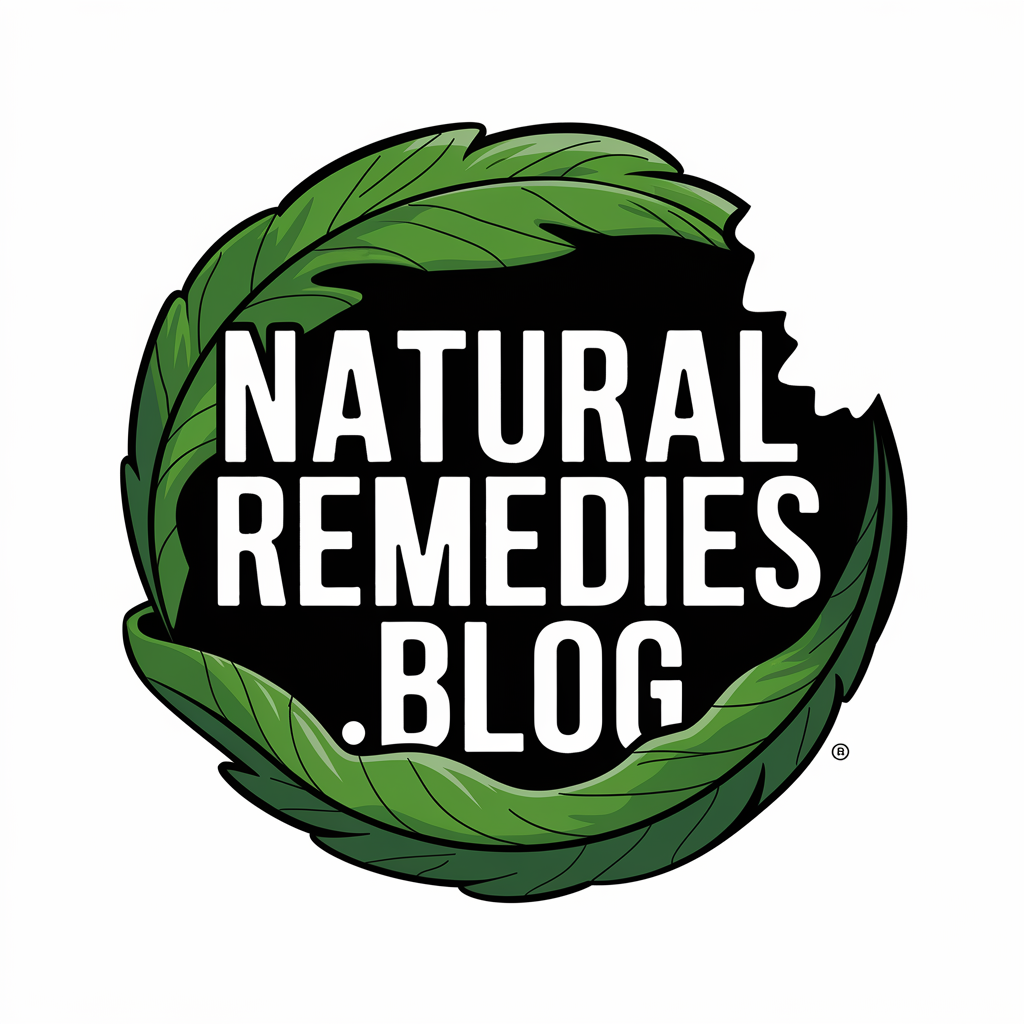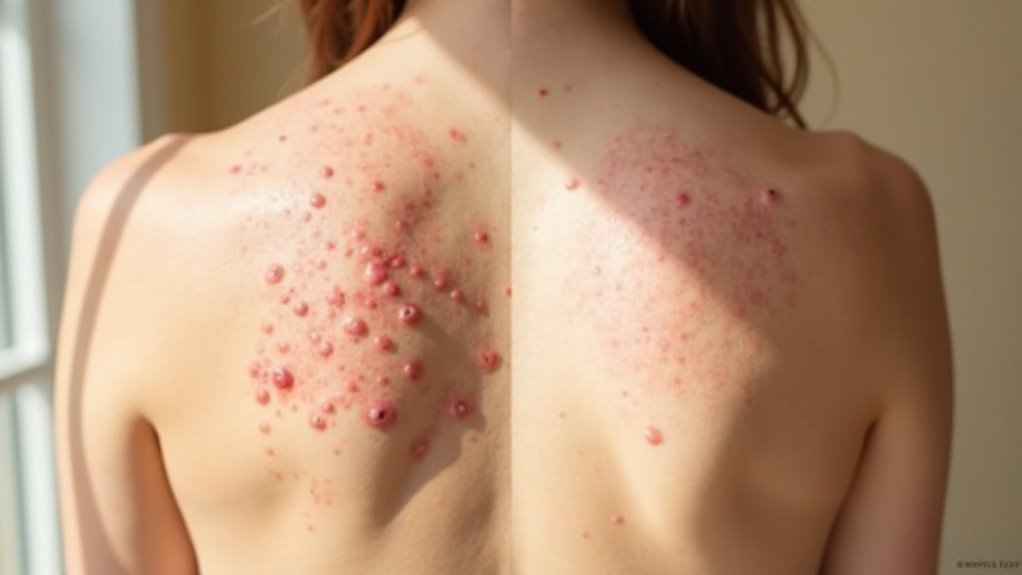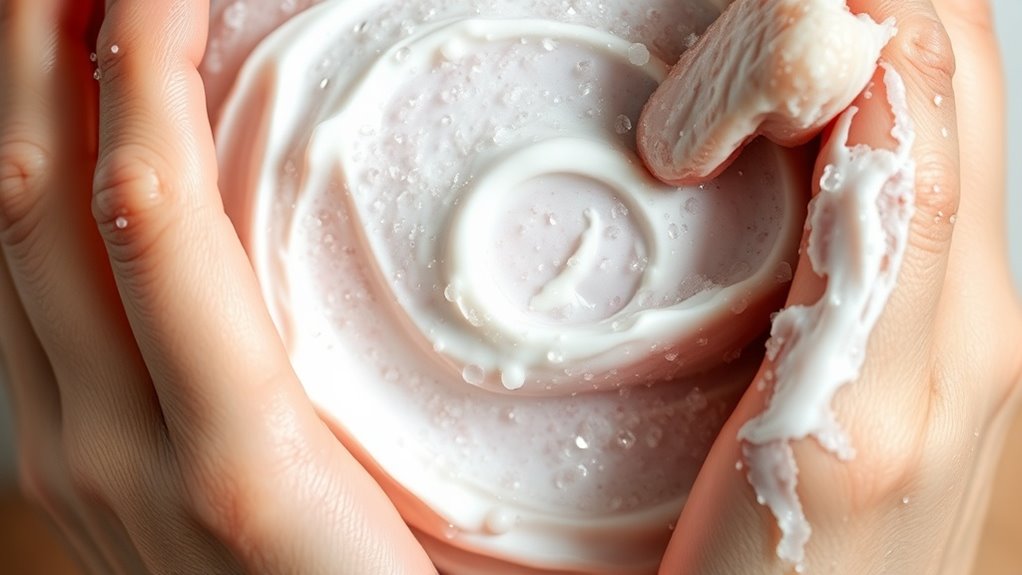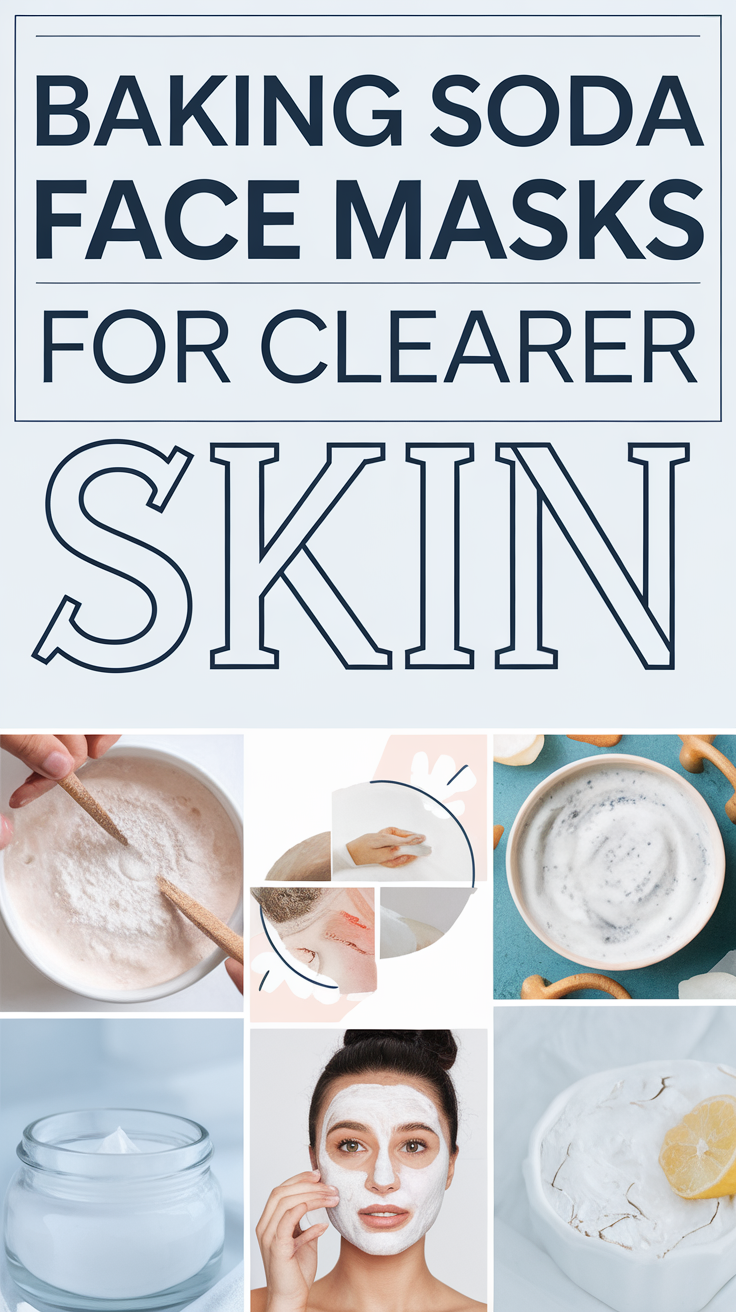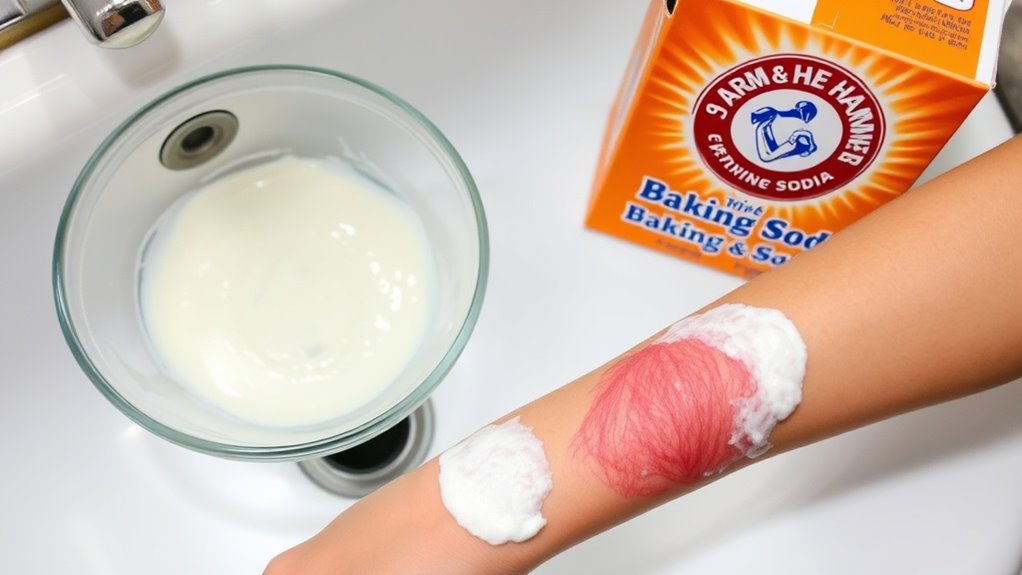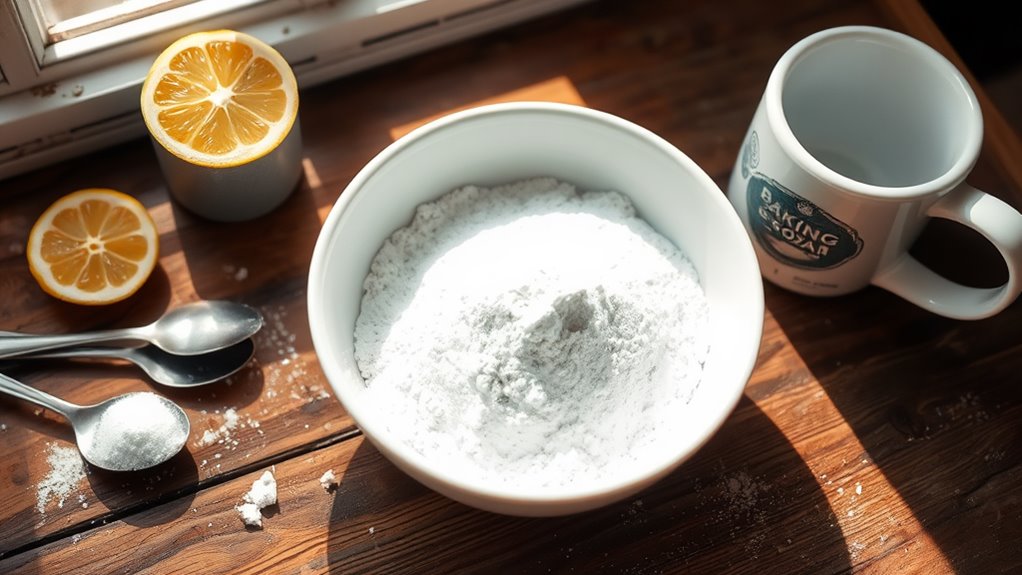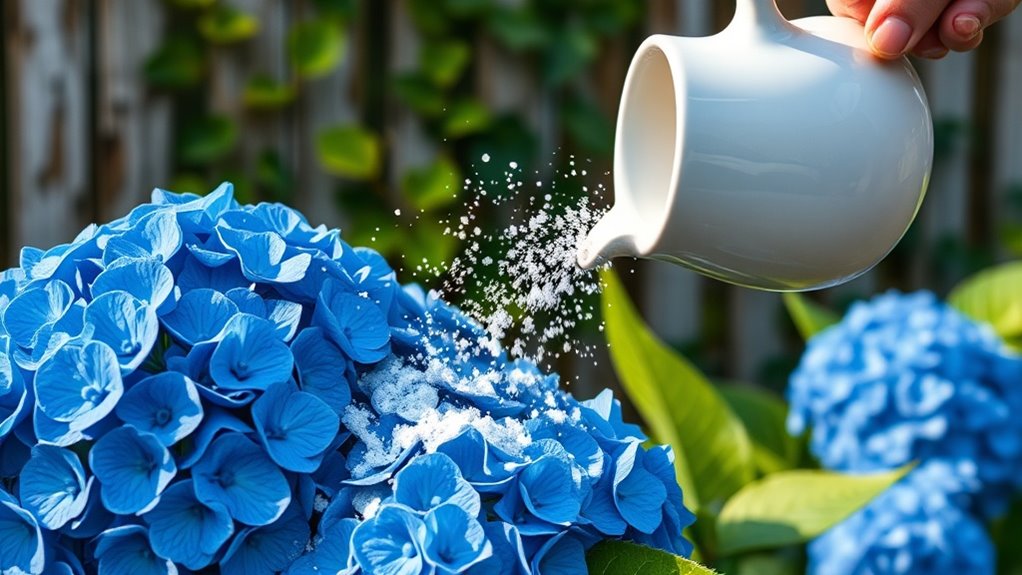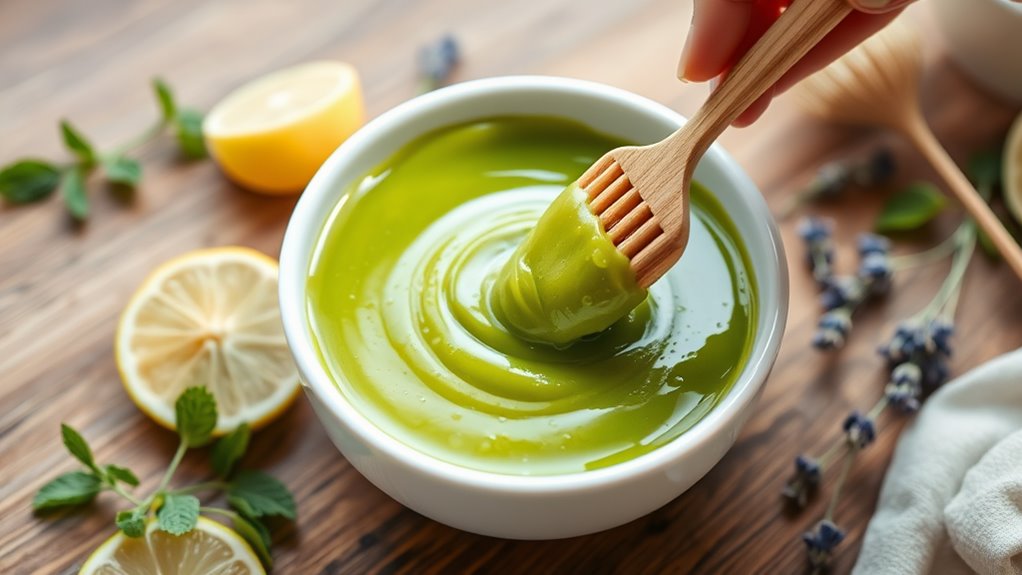Baking Soda for Back Acne. Here’s My Before-and-After
You can transform your back acne using baking soda’s natural antibacterial and pH-balancing properties. Mix two tablespoons of baking soda with water to create a paste, apply it to clean skin for 2-3 minutes, then rinse thoroughly. You’ll notice reduced inflammation within the first week, with significant improvement by week 4. For best results, combine with tea tree oil or raw honey, and maintain proper post-workout hygiene. Discover how this simple treatment can deliver lasting results.
Understanding Back Acne and Its Common Causes
Back acne, also known as “bacne,” occurs when hair follicles on the back become clogged with excess oil, dead skin cells, and bacteria.
You’re more likely to develop this condition if you have naturally oily skin, experience hormonal changes, or regularly wear tight, non-breathable clothing during exercise.
While searching for back acne remedies, it’s crucial to understand that several factors can trigger breakouts: excessive sweating, friction from backpacks or sports equipment, certain medications, and genetic predisposition.
Heavy moisturizers, hair products, and laundry detergents can also contribute by blocking pores and creating an environment where acne-causing bacteria thrive.
The Science Behind Baking Soda’s Anti-Acne Properties
Baking soda’s effectiveness against back acne stems from its ability to regulate pH levels on your skin’s surface, creating an environment where acne-causing bacteria struggle to thrive.
You’ll find that sodium bicarbonate’s inherent alkaline properties help neutralize excess acid while its crystalline structure provides gentle mechanical exfoliation of dead skin cells.
The compound’s natural anti-inflammatory characteristics can reduce the redness and swelling associated with active breakouts, making it a practical option for managing back acne.
Ph Balance and Bacteria
The scientific mechanism behind baking soda’s effectiveness against acne lies in its ability to alter skin pH and disrupt bacterial growth. When you apply baking soda to your skin, it creates an alkaline environment that P. acnes bacteria can’t thrive in. Your skin’s natural pH is 5.5, but baking soda’s pH of 9 temporarily shifts this balance.
| pH Level | Bacterial Activity | Skin Response |
|---|---|---|
| 5.5 | Normal Growth | Healthy |
| 6.0 | Increased | Vulnerable |
| 7.0 | Peak Growth | Inflamed |
| 8.0 | Declining | Adjusting |
| 9.0 | Inhibited | Neutralized |
This pH modification disrupts the microenvironment that acne-causing bacteria need for survival, leading to reduced breakouts.
Anti-Inflammatory Chemical Properties
Within baking soda’s crystalline structure lies a powerful anti-inflammatory agent: sodium bicarbonate (NaHCO3). When you apply it to inflamed acne lesions, it reduces redness and swelling by neutralizing acidic compounds that trigger inflammation.
The compound works by inhibiting the production of pro-inflammatory cytokines, which are proteins that signal your immune system to increase inflammation.
You’ll find that baking soda’s molecular structure also helps break down excess sebum and dead skin cells that clog pores. Its mild abrasive nature physically removes these impurities while its chemical properties reduce the inflammatory response in your skin tissue.
My Personal Journey With Back Acne
Your back acne experience may mirror my own challenging 15-year battle with stubborn breakouts that impacted both my confidence and clothing choices.
The turning point in my journey came when I discovered baking soda as a natural treatment option after exhausting numerous over-the-counter products and prescription medications.
During my first month of using baking soda paste treatments, I noticed a significant reduction in inflammation and fewer new breakouts, particularly across my shoulder blades where the acne was most severe.
Mixing the baking soda with natural bleaching properties helped fade the dark spots left behind from years of breakouts.
My Lifelong Acne Battle
Frustration became my constant companion during years of battling stubborn back acne that seemed resistant to conventional treatments.
From prescription medications to over-the-counter solutions, I’ve tried countless remedies with disappointing results. The physical discomfort and emotional toll affected my confidence, especially during summer months when covering up wasn’t practical.
Despite consulting multiple dermatologists and following strict skincare routines, the breakouts persisted. Traditional acne products often left my skin dry and irritated without addressing the root cause.
That’s when I began researching alternative treatments and discovered the potential benefits of natural remedies, including baking soda.
First Month Using Baking Soda
After researching baking soda’s potential benefits, I began my treatment by mixing one tablespoon with enough water to create a smooth paste. I applied this mixture to my back acne every evening after showering, letting it sit for 2-3 minutes before rinsing.
Within the first week, I noticed reduced inflammation and redness. By week two, existing pimples began drying out.
Week three showed fewer new breakouts, though some scarring remained visible. The most significant changes occurred during week four – my back’s texture improved substantially, and approximately 60% of my acne had cleared.
Some dryness occurred, requiring daily moisturizer application.
Step-by-Step Baking Soda Treatment Method
The successful application of baking soda for back acne requires following specific steps to ensure safety and effectiveness.
Start by mixing two tablespoons of baking soda with enough water to create a smooth paste.
Clean your back thoroughly with mild soap and pat dry.
Apply the paste to affected areas using circular motions, avoiding any open wounds or irritated skin.
Let it sit for 2-3 minutes – don’t exceed this time to prevent skin irritation.
Rinse completely with lukewarm water, then apply your regular moisturizer.
Repeat this treatment twice weekly, and stop immediately if you notice any adverse reactions.
Since baking soda has a pH level of 9, you should always conduct a patch test on your inner arm 24 hours before application.
Week-by-Week Progress Documentation
You’ll notice significant improvements during your first week of baking soda treatment as inflammation begins to subside and existing acne starts to dry.
By week 4, you’ll observe a marked reduction in both active breakouts and post-inflammatory marks, with approximately 50% clearer skin compared to when you started.
The full transformation becomes evident at week 8, when you’ll typically see 70-80% improvement in back acne, with smoother texture and fewer new breakouts.
Using natural remedies like essential oils can help reduce inflammation and speed up the healing process when combined with baking soda treatments.
Week 1: Initial Changes
During week one of baking soda treatment, most users notice initial changes in their back acne condition.
You’ll likely experience a mild tingling sensation when applying the baking soda paste, indicating its active interaction with your skin. The affected areas may appear less inflamed, and existing pimples might begin to dry out.
You’ll observe that your skin feels less oily throughout the day, and some smaller blemishes start to fade.
While deeper cystic acne won’t disappear yet, you’ll notice reduced redness and swelling.
Some users report temporary skin dryness, which you can address with a non-comedogenic moisturizer.
Week 4: Halfway Results
By week four, consistent users of baking soda treatment typically notice significant improvements in their back acne.
At this halfway point, you’ll observe measurable changes in both active breakouts and overall skin texture.
- Existing acne lesions have significantly decreased in size and redness
- New breakouts occur less frequently, with reduced inflammation
- Previously affected areas show signs of healing with minimal scarring
- Skin pH levels begin stabilizing, creating a less hospitable environment for acne-causing bacteria
Monitor your progress by taking weekly photos and tracking any skin sensitivity.
If you’re experiencing continued improvement without adverse reactions, maintain your current treatment regimen.
Week 8: Final Transformation
The eight-week mark represents the culmination of your baking soda treatment journey, with most users reporting complete or near-complete resolution of their back acne.
At this stage, you’ll notice significantly smoother skin texture, with previous scarring now faded to minimal visibility. The inflammation and redness that were present at the start have subsided, leaving behind a more even skin tone.
Your back’s surface should feel cleaner and less oily throughout the day.
For optimal maintenance, you’ll want to continue applying the baking soda treatment twice weekly to prevent future breakouts and maintain your cleared skin.
Tips for Best Application Results
While applying baking soda to treat back acne requires careful technique, following specific guidelines will maximize its effectiveness. You’ll need to maintain consistency and precision in your application method to achieve optimal results.
-
Mix 2 parts baking soda with 1 part water to create a paste-like consistency that won’t drip.
-
Apply the mixture using circular motions, ensuring complete coverage of affected areas.
-
Leave the solution on for 2-3 minutes maximum to prevent skin irritation.
-
Rinse thoroughly with lukewarm water and pat dry with a clean towel.
Remember to perform a patch test 24 hours before your first full application.
Potential Side Effects and Precautions
Despite its effectiveness for some users, baking soda can cause adverse reactions when applied to sensitive or compromised skin.
You’ll need to watch for redness, burning, itching, or excessive dryness, which signal potential irritation. Stop use immediately if these symptoms occur.
The high pH level of baking soda can disrupt your skin’s natural acid mantle, leading to increased sensitivity and vulnerability to bacteria.
Don’t use this treatment if you have open wounds, severe inflammation, or a history of skin conditions. Always perform a patch test on a small area first, and never leave the mixture on your skin for more than 5 minutes.
For enhanced skin protection during treatment, consider mixing baking soda with natural moisturizers like honey or coconut oil.
Combining Baking Soda With Other Natural Remedies
For enhanced effectiveness, you can safely combine baking soda with several natural ingredients to create potent back acne treatments.
These natural pairings complement baking soda’s exfoliating and pH-balancing properties while adding their own therapeutic benefits.
-
Tea tree oil: Adds antimicrobial properties that fight acne-causing bacteria
-
Raw honey: Provides natural antibacterial effects and helps retain moisture
-
Lemon juice: Contains citric acid that helps unclog pores and lighten acne scars
-
Apple cider vinegar: Balances skin pH and contains beneficial acids that reduce inflammation
Mix these ingredients with baking soda to create customized treatments suited to your skin’s needs.
The caprylic acid in coconut oil can be another powerful addition to your baking soda treatment, as it naturally penetrates and breaks down unwanted bacteria on the skin.
Maintenance Routine After Clearing
Once you’ve successfully cleared your back acne using baking soda treatments and natural remedies, maintaining clear skin requires consistent preventive care.
Continue using a gentle baking soda scrub once weekly to prevent new breakouts. Change your sheets every 4-5 days and wear clean, loose-fitting cotton shirts.
After workouts, shower immediately and use an oil-free body wash. Apply a non-comedogenic moisturizer while your skin is still damp.
Monitor your skin’s response and adjust your maintenance routine accordingly. If you notice early signs of breakouts, increase baking soda treatments to twice weekly but don’t overdo it, as this can irritate your skin.
Alternative Solutions if Baking Soda Isn’t Working
While baking soda works for many people, some individuals may find their back acne persists or worsens with this treatment.
If you’re not seeing results, consider these proven alternatives:
-
Benzoyl peroxide body wash (2.5-10%) targets acne-causing bacteria and helps unclog pores
-
Salicylic acid products penetrate deeply to dissolve dead skin cells and reduce inflammation
-
Tea tree oil solutions provide natural antimicrobial properties with less irritation
-
Professional-grade chemical peels containing glycolic or lactic acid exfoliate and promote cell turnover
For particularly stubborn cases, a Listerine foot soak can help eliminate bacteria when applied to affected areas with a cotton pad.
Consult a dermatologist if your back acne doesn’t improve with over-the-counter treatments, as prescription medications may be necessary.
